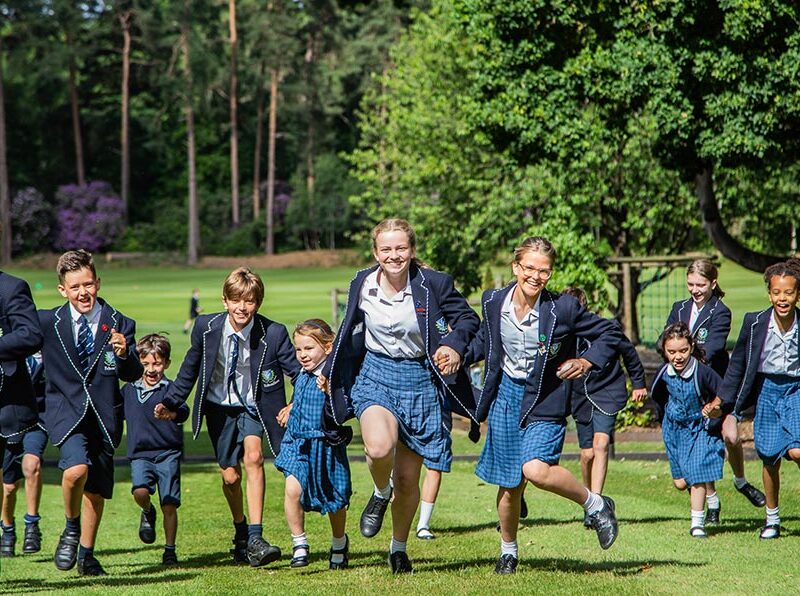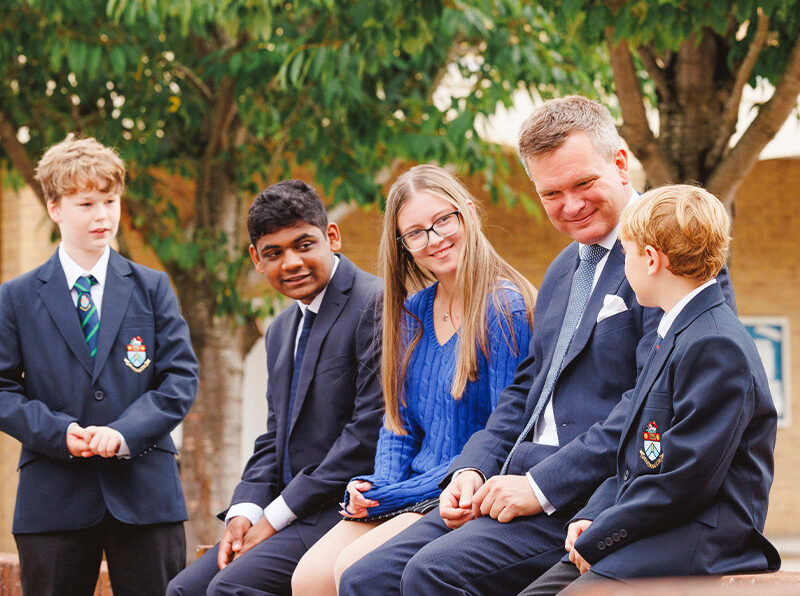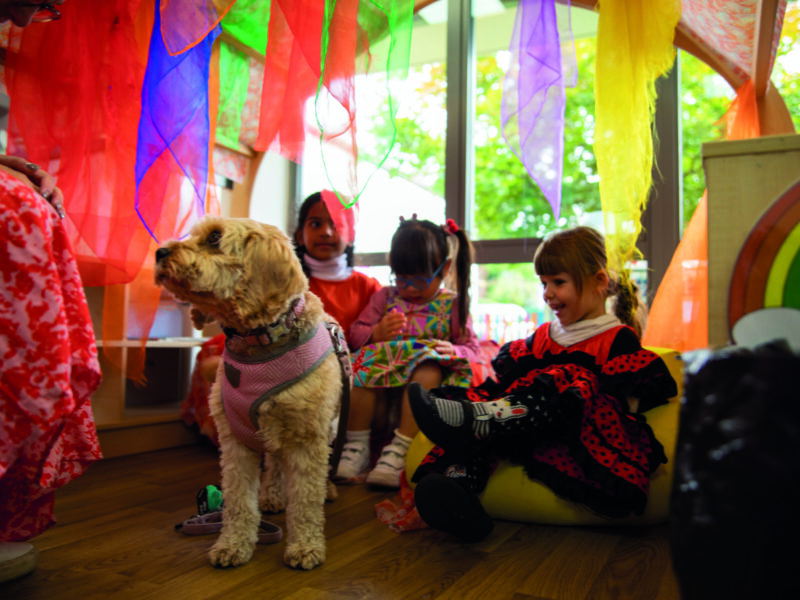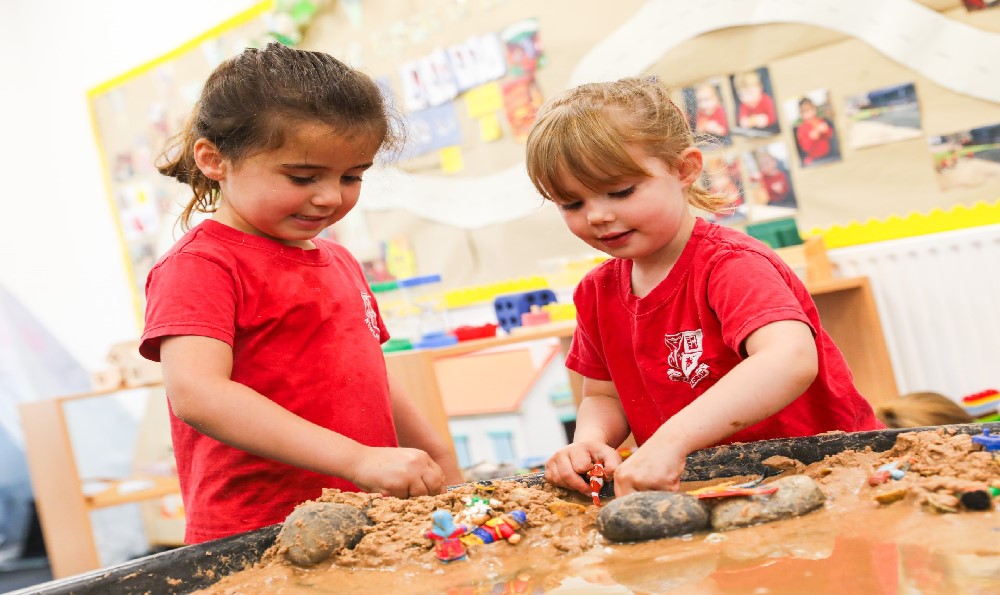
Early Years Education
Early Years Education
How to find the right setting for your child.
Pictured: Newland House School
Choosing the right kind of setting for the early years is an important decision and it can be overwhelming to know what will suit your child and how best to start the process.
Psychologists agree that a child’s first experience of a world ‘outside their home’ is very important, and the transition of settling into their nursery or pre-school can be a challenging and sensitive time.
In the UK, all three-to-four-year-olds in England can get 570 hours of free childcare per academic year. It is usually taken as 15 hours a week for 38 weeks of the year, but you can choose to take fewer hours over more weeks.
The hours are available, but it’s stipulated that the childcare must be with an approved childcare provider, and it stops when your child starts in Reception class (or reaches compulsory school age). The childcare allowance is available from the term after your child’s third birthday.
The options you consider will depend on a whole range of factors such as the logistics of getting there, how many hours you’re looking for, and, crucially the environment that will best suit your child.
When you are looking at the different early years settings you can check their Ofsted report to make sure that they meet the Early Years Foundation Stage (EYFS) requirements for learning, development and welfare.
How to choose?
It is vital that you visit the options that you are thinking of sending your child to. Chat to the staff about how long they have been there. A high turnover of staff can be something to watch for, as it’s disruptive for the flow of the nursery. See if you can speak to other parents who send their children there.
Most importantly, the connection between the staff and children is paramount. Are staff engaged and focused on the children? Do they provide the sorts of activities your children enjoy? Is there a nice space for them to play outside? Also many early years settings offer extra lessons from specialist teachers who come in during the week to do a football class, or group music lessons, for example. If you are keen on your child being exposed to a particular activity then ask if it’s available and how many spaces there are for these extra courses.
Head of Nursery Schools at The Roche School and Keswick House Nursery, Gabriella Emery, says that an open day can be an invaluable part in the decision-making process. “The true atmosphere and culture of a school can be palpable if the experience is in person. If you feel the passion of leaders and staff, for some, this plays a key contributory factor when making a decision and can even be a game changer. You need to ‘visualise’ your child being in the environment so seeing the learning spaces and finding out what goes on within is incredibly helpful to build up an accurate picture of a school.”
If you feel you need more than one visit, make sure you ask. Prospective children should be welcomed to the open days too. Adds Gabriella: “The best impression of any school is to see the children not only in class but how they move around the school and even in the playground. It will be the unplanned parts of the tour which will give you a real insight so make sure you stop and question along the way – ask the children too!”
“The school values should be evident and children should look happy, engaged and motivated, as the staff should be. It’s always a good sign if leaders know the children’s names and a massive plus if you sense the children know the leaders well. Above all, you should feel a school has flexibility as no child and family are the same.”
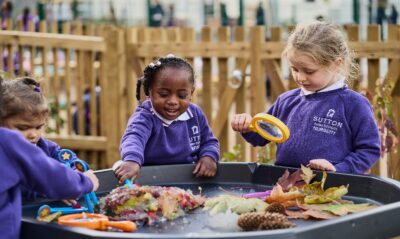
Pictured: Sutton High
Anne Musgrove, Head of Prep School at Sutton High, says: “Children’s brains grow so much in those early years and it really is investing for life. There is lots of information on websites and marketing that a school does, but until you have visited the school and get a feel for the place, it’s impossible to tell.”
Sutton High’s nursery is inspired by the educational approach of Reggio Emilia, based on the philosophy that the environment is the third teacher. Its new building, Fernwood House, is a huge light space with fluidity, natural materials and is sustainably built. Learning about the environment and natural world is enabled through the outdoor classroom, which helps build confidence and resilience.
Anne Musgrove believes that in order for positive learning to occur, children need to be able to take appropriate risks. “In order for children to feel ready to take risks, they need to feel supported and safe, and that in turn creates independence and resilience, which are attributes we encourage from the early years and throughout.”
“It’s no longer just about sitting in the classroom, it’s about making learning the best it can be.”
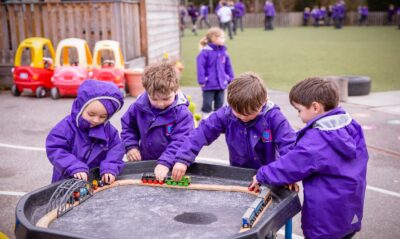
Pictured: Weston Green School
Mrs Putman is Head of Pre Prep at Weston Green School in Thames Ditton, and she reinforces these ideologies. “We work with Early Years specialists on a tailored approach where play is purposeful and linked to the curriculum, but it is free play. We also offer our children a weekly experience with a variation from the specialist team, on music, French, games, forest school, and yoga.”
There is a distinct shift away from traditional learning in the early years and now just teaching ‘The 3 Rs’ is an outdated concept.
Sarah Lee, Head of Wilberforce House at The Study Prep in Wimbledon says: “We see the benefits of a combination of indoor and outdoor learning in the early years at The Study. Our outdoor play policy helps the development of healthy and active lifestyles, as well as offering children freedom and movement.
“It also provides opportunities for developing harmonious relationships with others, through negotiation, taking turns and co-operation.”
Newland House School’s Laura Clouting, Head of Early Years and Reception Teacher echoes the same philosophies. “In our early years, we fully embrace the EYFS curriculum to ensure that children learn creatively, physically and socially. We encourage their development and enjoyment of learning through a variety of different activities in secure indoor and outdoor situations, through play and through structured and creative activities. Children in our Nursery and Pre-Prep also benefit from specialist teaching in music, French and PE.”
So whilst it may feel overwhelming in starting the process of looking for the right Early Years environment, there is now a huge amount of choice. Undoubtedly most places are generally shifting from more traditional structures, with an emphasis on outdoor learning as well as indoor, but there are still so many other variables to take into consideration. So it’s important to remember that no-one knows your child as well as you and to trust your instinct.



